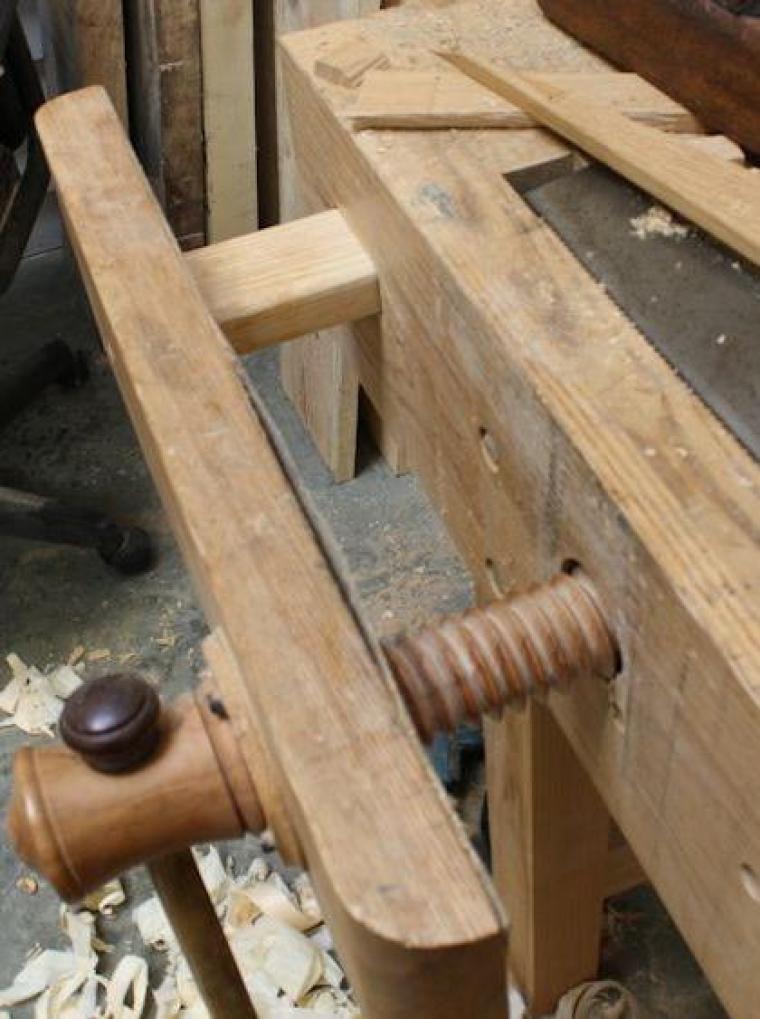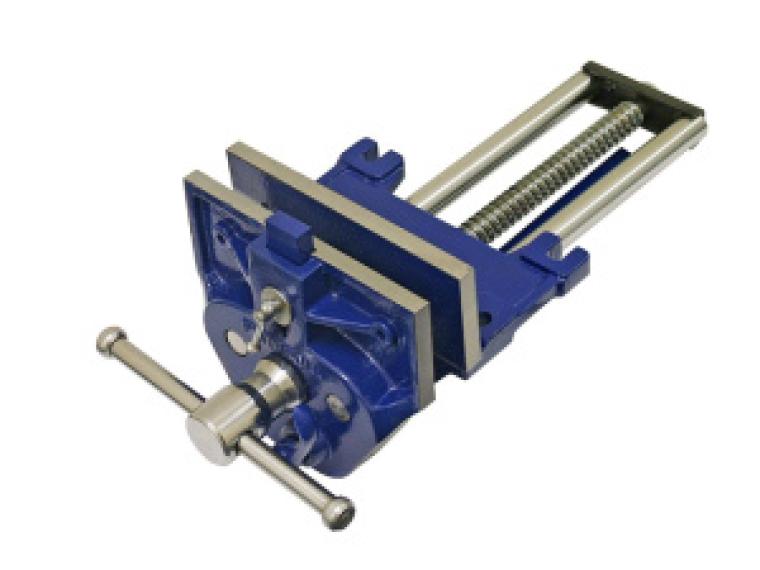Vice Choices
The traditional British Workbench has little variation in vice choice. Early benches generally had a wooden face vice (although some did have leg vices) consisting of a wooden screw to apply clamping pressure and runner to prevent the vice spinning and drooping aimlessly. During the early part of the 20th century this vice soon became a thing of the past in professional joinery workshops. Its replacement was the mass produced quick release vice. The chief advantages of the quick release vice was just that, it’s quick release. Whereas a wood screw had to be unwound the quick release only needs a tug on a lever and it can be slid out and then slid back again in the blink of an eye. The quick release is supremely strong too, allowing the worker to apply firm pressure with no fear at all of damaging the vice.

Nearly any image you will see of an old British joiners bench will have the vice to the left of the worker when stood at the bench. The reason for this is that it suits the right handed worker. And we know from our history books that left handism (yes I made up a word) was something to be corrected rather than accepted.

So, the choice is made, its a no brainer, fit the quick release vice. Well one things for sure I would not be dissapointed having worked at one for 15 years and played with them as kid I have found them to be truly brilliant. That said I’m anxious to try out an old face vice. The compramise here is that I won’t be using a wooden screw but a metal one instead. The other break from tradition is that I will be adding a vice in the tail position and this will be a quick release. I was tempted to omit this and stick rigidly to tradition but it seems sensible to have one. The advantage to this is securing items to the bench top, however I also think it could be rather useful for tenoning too although testing that theory will be for another day.
